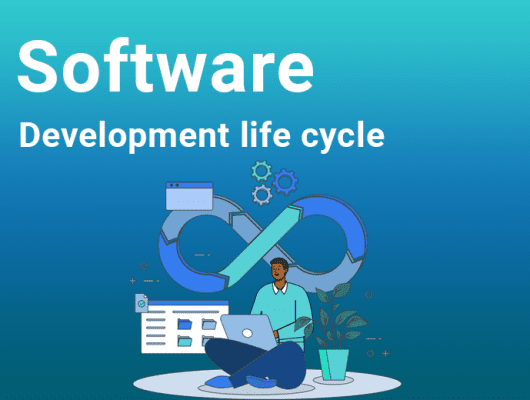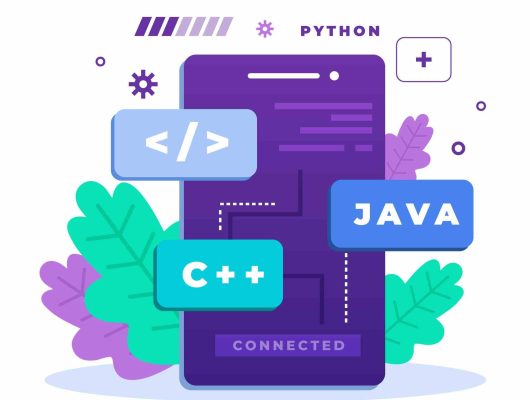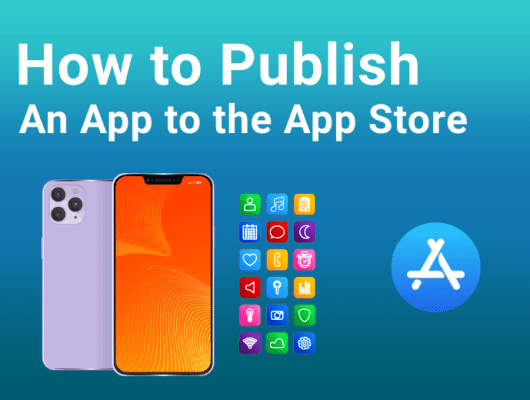
How to Create a Food Delivery App?
Creating a food delivery app can be a rewarding project, offering convenience to customers and new business opportunities for restaurants. This process involves planning, designing, developing, and launching an app that efficiently connects hungry users with nearby restaurants. But have you considered what unique key features your app will offer to stand out from the competition? How will you ensure a seamless user experience? What strategies will you use to partner with local restaurants and ensure timely deliveries? Answering these questions is crucial for developing a successful food delivery app.
Table of Contents
So, let’s find out!
Six Easy Steps of How to Create a Food Delivery App

Developing good food delivery software requires following six essential steps methodically, such as,
Evaluate the feasibility of your proposed food delivery app.
Begin by conducting targeted market research to validate your concept before diving into the creation of food delivery apps.
Although the food delivery industry is dominated by heavyweights like DoorDash, Uber Eats, and Grubhub, there are plenty of niche options.
Think about customizing your app to fulfill a particular purpose, such as combining it with your neighborhood store, grocery store, or restaurant.
Note that, creating an app gives you greater control over expenses and client interactions, which is advantageous for even little companies like pastry shops or cafes.
Select Your Development Strategy for the Food Delivery App
Select the development approach that will work best for your meal delivery app.
Depending on your resources and experience, you may choose to use a DIY app builder, work with a technology partner, or hire a software development team.
- Employing a Development Group
Choosing to create your app from the ground up enables individual customisation.
Still, it takes enough time, money, and technological know-how.
Establishing a specialized in-house or externally contracted development team gives you total control over the app’s functionality and design, enabling you to precisely customize it to meet your demands.
However, you must think about your budget before selecting this alternative.
This can be a good choice for you if you have enough money to spare.
However, using DIY App Builders App builders are perfect for individuals looking for quicker app releases because they provide user-friendly interfaces and rapid deployment.
These platforms make the development process easier by providing ready-made templates and efficient tools.
You could find that using pre-made app builders is a more affordable solution.
However, in comparison to creating an app from scratch, they could limit customisation and flexibility possibilities.
- Working together with an IT Partner
Getting together with a technology partner allows for faster development while also allowing for customisation.
By working together with a reputable company like Onyxtec, you can take advantage of the team’s experience and guarantee customized solutions that address your unique requirements.
Determine Your Business Model for Food Delivery
There are multiple ways to commercialize your app idea, and there are various ways that food delivery applications operate.
- Delivery services: You develop an application and company to manage restaurant deliveries to patrons. These business models take a percentage of each order and charge restaurants a fee for using the platform.
- Third-party facilitator: The app links customers and eateries, just like the first model. However, a third party handles every delivery. Thus, you are not only using the app as a service, but you are also not actually handling the food.
- Apps for direct food delivery occur when a grocery store or restaurant has a food delivery app of its own. The store or restaurant manages both the software and order fulfillment internally.
Usually, the first two models charge eateries to be featured, which generates revenue for them. They can also profit by collecting a portion of each order or by charging delivery fees. Some even charge customers for premium subscriptions in exchange for loyalty benefits.
However, the third model merely charges clients for the food included in each order. You might occasionally charge more for delivered items or charge a set delivery price for every order.
As an alternative, you can eliminate delivery costs by charging a monthly subscription. This is a fantastic method to boost order frequency and foster client loyalty.
Choose Your Features
Every food ordering app will have the same characteristics. For your business plan, some of you might desire to develop a personalized meal delivery app with special features.
Nonetheless, prior to initiating the development phase, it’s crucial to have a comprehensive grasp of the desired feature.
Your features will drive the entire app development lifecycle. While developing an application, it’s easy to get swept up and incorporate features that seem appealing, even if they are unrelated to the main goal and function of your food delivery service.
Development and Design
This step will require the most effort for a meal delivery app. Each person’s version will alter slightly based on the development model they chose in step #3.
The design procedure will be pretty simple if you choose to use a do-it-yourself app creator.
However, to make your app a real mark in real life, it is productive to collaborate with a reputable app development company.
Promotion and Launch
The final step is to launch your food delivery application. To maximize your potential customer base, ensure it’s accessible on both the Google Play Store and the Apple App Store.
After that, all you need to do is promote your app and encourage users to download it.
You might wish to offer incentives to users who try the app early on, such as discounts for nearby eateries and grocery stores. One way to get someone to try it out would be to offer them something like a 20% discount on their first order. That order may not bring in a lot of money, but it’s still a small price to pay to gain new users.
Moreover, advertise your meal delivery service on your website. Create flyers on paper and display them at your eatery or business. Distribute mass emails to your list of subscribers. Use social media to advertise the app.
Make every effort to encourage downloads. You may start building excitement about your app even before it debuts, which will ensure that users are prepared to download it when it does.
Why Develop a Platform and App for Food Delivery?

Apps that deliver food are becoming more and more popular because they make it easy for customers and establishments to interact.
Including a meal delivery app in your online food delivery business has several benefits. Let’s examine the factors that make developing a meal delivery app a great idea:
Lower Operating Expenses
Choosing a meal delivery app is the best way to manage operations smoothly and ultimately reduce operating expenses. Investing in a meal delivery app allows you to make use of some of the user-friendly features that can reduce your operating expenses by offering.
- Tracking in real-time client order status
- Automated supervision of delivery personnel
- Multiple payment methods
- Reports and an advanced analytics dashboard for fast analysis
With only one click, all of these functions may be used without the help of a human, which lowers operational expenses and error rates.
Saves Your Clients’ Time
Driving to pick up takeaway requires a lot of time. This is particularly true in urban areas where parking is scarce.
In major cities like New York, Los Angeles, Boston, and others, a mile or two could take half an hour to drive round trip. Some folks feel that the trouble isn’t worth it this time.
According to a recent survey, 70% of customers are willing to spend extra money on meal delivery services in order to save time and effort.
Simple to Order and Utilize
Mobile food delivery platforms are simple to use for both customers and companies.
There are no mishearing accents, waiting on hold, or attempting to make out customers over background noise from the kitchen.
It’s as easy as choosing meals from an electronic menu or shopping list. Payments are processed in advance, and items are added to a cart. Companies receive Payment right away, and customers enjoy ease.
Anyone can order food from a smartphone app. People of all ages can access your business, and there is almost no learning curve.
Resultantly, this allows you to promptly make back the money you originally allocated for development.
Grow Your Company
Developing a meal delivery app enables you to bring in additional cash for your company.
Food delivery services are here to stay. Thus, you have two options: change with the times or run the danger of losing the interest of your clientele.
This is a sensible addition to any grocery store or restaurant. While other applications will be on the market that deliver groceries and meals, why not use your own app to manage this internally?
Process Flow of an App & Platform for Online Food Delivery
Four primary stakeholders may be identified in the workings of an online meal delivery app: i.e. administrators, delivery agents, restaurant owners or merchants, and customers.
The following is the workflow:
The Administrator
The administrator entirely owns the platform. The admin may use the admin panel dashboard to control the platform’s user interface (UI) and monitor a range of operations, including orders placed, deliveries, newly registered users, and customer reviews.
Merchants or Owners of Restaurants
Vendors create accounts on the platform and update details about their eateries and products. Depending on the subscription plan they choose, merchants can register as one restaurant or several restaurants. Restaurant operators can establish offers and discounts for patrons, manage and modify menus, accept or reject orders, and monitor sales and profit using the merchant dashboard.
Delivery Staff
By setting up accounts on the mobile app, delivery agents can register on the food delivery platform. The delivery staff app notifies the delivery agents who are in the vicinity of the restaurant once the order is accepted. Depending on their availability, the delivery agents may accept or refuse the order.
If no delivery agent accepts the order, the administrator retains the right to designate any delivery partner to handle the delivery.
Client
Clients can use the food delivery app to place orders as guest users or register for an account on the food delivery platform. While placing an order, customers can select from a variety of eateries that deliver to their location. With a few clicks on their mobile devices, clients may place their orders after choosing the food items they want to order.
Once the order is placed, the customers choose from a variety of accessible payment methods to complete the transaction. The admin receives the Payment straight into their account, which is then credited to the merchant’s wallet once the commission has been subtracted. Orders and deliveries are trackable for customers. Customers can rate and evaluate the restaurant when their order is delivered and marked as completed.
How Much Does It Cost to Develop an App for Food Delivery?
Apps for food delivery can cost $500 a month or more upfront. The main factors influencing this cost will be your features and development process.
The most economical choice is a do-it-yourself app builder. Instead of paying an app development business tens of thousands of dollars upfront, you can make the app yourself for a small monthly subscription cost.
On the other hand, developing an app similar to Uber Eats that has real-time GPS tracking and integrations with thousands of restaurants can cost millions of dollars.
Apart from it, if you keep things basic, a local restaurant or grocery store looking to app might be able to spend $10,000 or $25,000. Being simple does not mean giving up features and usefulness. It simply implies that you should cut out the extra features and create only what is required for the program to function as intended.
To get an idea of how much your app development will cost, contact us for a consultation.
Final Verdict
Apps for food delivery can be pretty profitable. They work well for neighborhood grocers and eateries that wish to give their patrons a contemporary food ordering experience.
Another option is to develop a food delivery app that links users with nearby eateries and supermarkets. Therefore, it is not necessary to already possess a business to create an app for a meal delivery service.
You may construct a meal delivery app by simply following the steps listed in this guide. Keep an eye out for the essential components of success that we also discussed. Throughout the development process, this is the area you should concentrate on.
FAQ: How to Create a Food Delivery App
Who covers the cost of the complimentary delivery?
Many e-commerce companies got their start by matching competitors’ box prices and in-store prices AND providing free shipping. In this instance, the Retailer’s profit margin is reduced by the cost of shipping. While this aids in the Retailer’s customer acquisition, it is not a long-term viable approach.
Could grocery delivery be automated?
To get started, register for a free account on Ordermate and set up your first Ordermation (you can find instructions on how to do that here). In essence, an ornamentation is a shopping list of products from stores like Amazon or Walmart that will be automatically ordered and shipped according to a timetable you specify.




